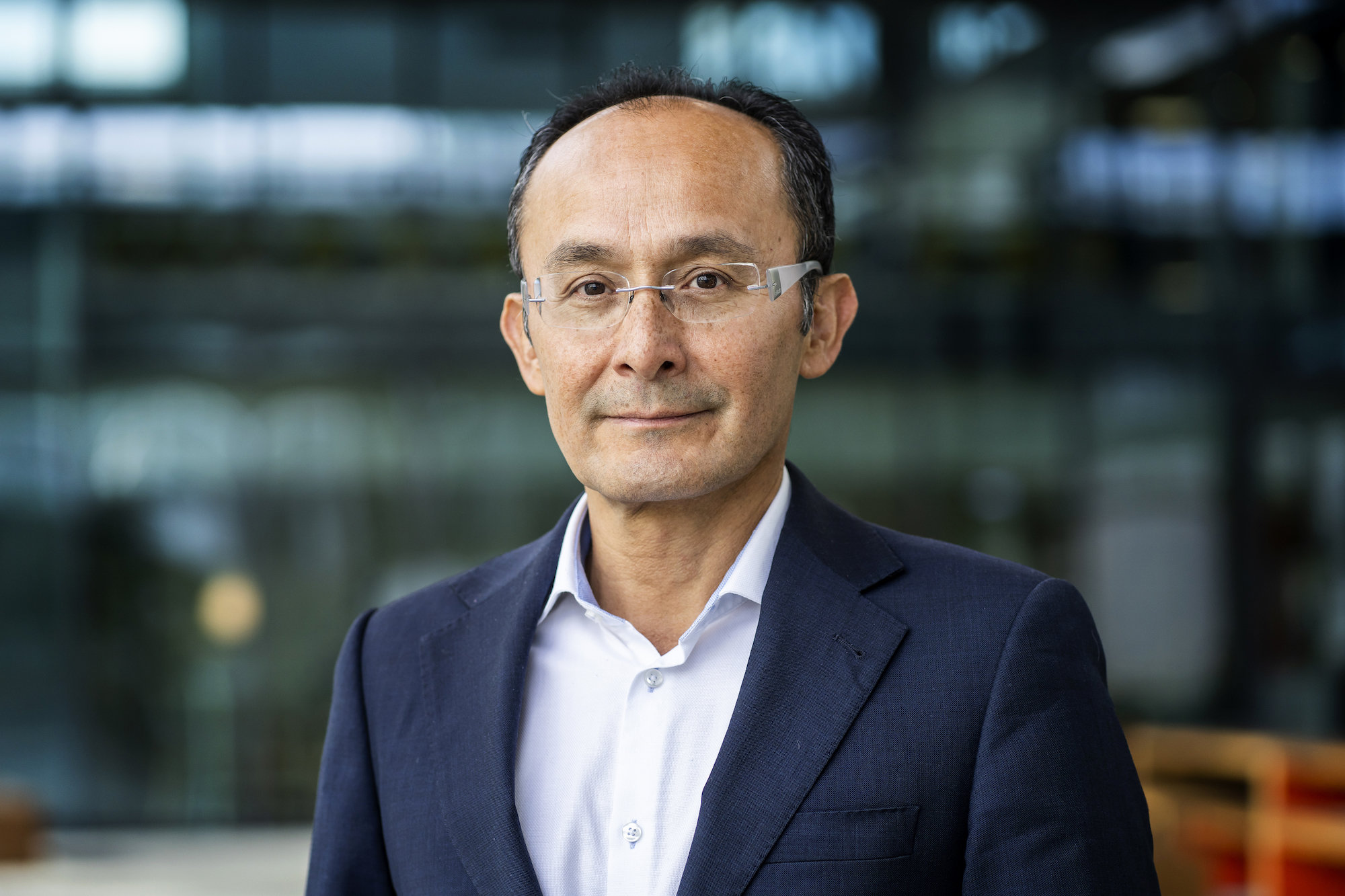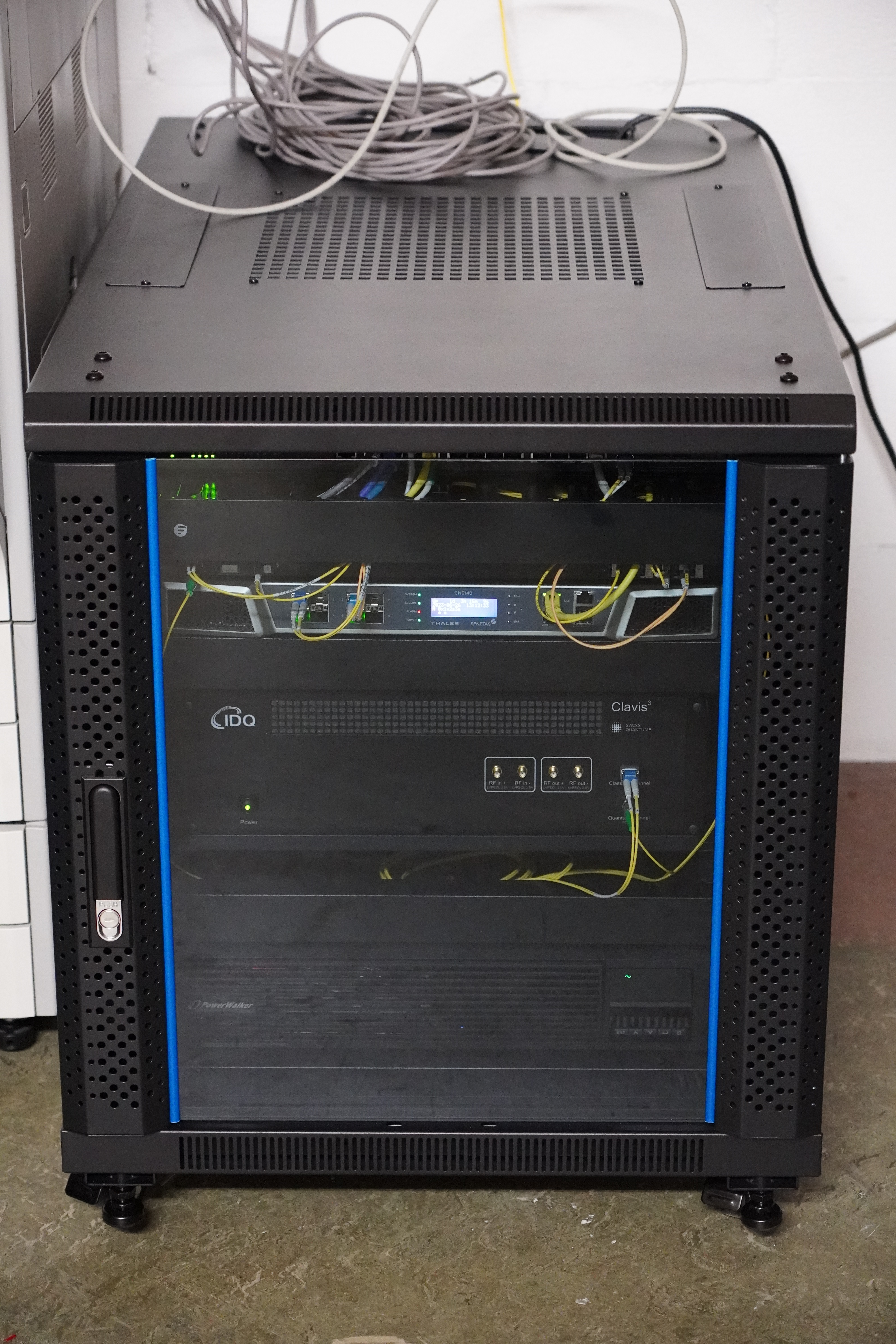Research highlight
Towards quantum secure communications
A demonstration of a key new technology which was successful because no one noticed anything of it. As contradictory as that may sound, that is exactly what TU/e researchers together with WeConnect and Het Huis van Waalre realized in June 2023. Mayor Marcel Oosterveer and alderman Peet van de Loo held a seamless videocall, which was secured through quantum technology. TU/e’s Idelfonso Tafur Monroy explains.
Quantum computers are rapidly maturing. If implemented, they are capable of breaking current public key cryptography. So, now is the time to come up with new strategies, so called quantum secure technologies, to keep our future communication and data exchange safe. To bridge theory and practice, TU/e is building a physical testbed to test and validate quantum-safe communication technologies. The testbed is also aimed at providing industry with support for the further uptake and deployment of these technologies. The demonstration in June marked a key milestone in the development of the testbed.
‘In this testbed, we take a practical approach,’ says Idelfonso Tafur Monroy, TU/e professor. ‘We acknowledge that the transition towards quantum secure networks has to be a gradual one: we simply cannot shut down the entire classical communication infrastructure to replace it by a quantum secure alternative. So, in this testbed, we focus on quantum technologies to work together with classical infrastructure.’ That is also what this first demonstration was about, he says.

“We acknowledge that the transition towards quantum secure networks has to be a gradual one.”
Idelfonso Tafur Monroy | Full professor
Standard infrastructure, special security
Two people were having a videocall using standard technology, over standard optical fiber network. ‘What we’ve added was encryption using keys derived from a quantum secured key exchange in such a way that any eavesdropper would immediately be noticed.’ The researchers used Quantum Key Distribution, a method that relies on quantum physics to exchange cryptographic keys between sender and receiver. If anyone is eavesdropping on the key exchange, that changes the properties of the messages sent and therefore intrusion is detected and key exchange is stopped. This key exchange is light based, uses similar technology and takes place over the same type of optical fibers that also carry the video signal. ‘This coexistence is one of the topics we are studying in the testbed. How can we best connect the classical infrastructure to the quantum systems, and how can we expand this idea from point-to-point connections to multi-point ones using interconnected trusted nodes in a larger scale network?’
The testbed is a physical infrastructure, Tafur Monroy stresses. ‘It consists of actual optical fibers around the TU/e campus that are physically connected to optical fibers in and around Waalre, and to the Automotive Campus in Helmond. There are plans to also connect to the High Tech Campus and to the Jheronimus Academy of Data Science in Den Bosch.’ In a later phase, there are also plans to expand to other hubs in the Netherlands, and even to branch out to Germany and Belgium.

Besides the optical fibers, the testbed also consists of QKD nodes. ‘You can imagine them, jointly with the classical optical routers, being the new quantum secure backbone of the communication over optical fibers.’ At the moment, the transponders used to generate, transmit and receive the keys are approximately the size of a pizza box. ‘One of the research challenges is to use integrated photonics to miniaturize and simplify those, making them more energy efficient and easier to install, maintain and operate,’ explains the researcher.
Multifaceted challenges
But that is not the only technical aspect that still needs work, he says. ‘We need to increase the distances over which we can exchange the keys, increase the rate at which they are generated, develop components like repeaters, switches and memories, and find out how we can ensure end to end security in a complex network.’ And besides the technical challenges, there is also a myriad of other questions that need to be answered, he emphasizes. ‘In Eindhoven, together with our ecosystem we take a holistic approach to the topic of secure communications for the future. That means we also look into issues of democratization (who gets access to what and under which conditions), standardization and regulations. Different companies and countries should be able to make use of different protocols, and the whole thing should still be able to work seamlessly and secure.’ Even though the researchers are facing huge challenges, Tafur Monroy is confident that the testbed will be instrumental in solving the complex puzzle.
‘This not just popped up out of the blue, but is based on years of experience in developing all the underlying technologies. The current testbed organically grew from the people and expertise that are brought together in the Eindhoven Hendrik Casimir Institute. And now, it offers so many exciting possibilities! Not just in terms of academic research, but perhaps even more when it comes to solving real life problems. There are only a few moments in history when you are aware that you can have a big impact. This testbed is one of those once in a lifetime opportunities where we are able to significantly influence the Internet of the future.’